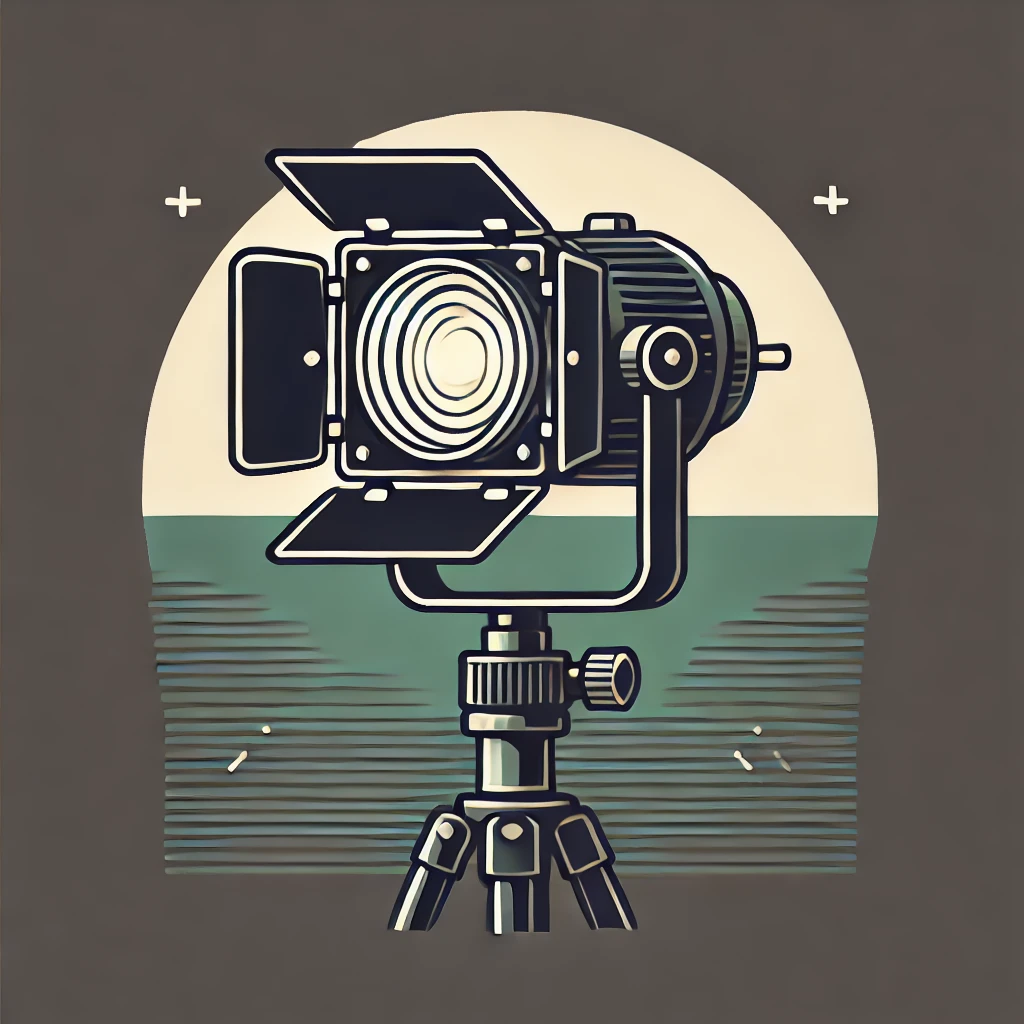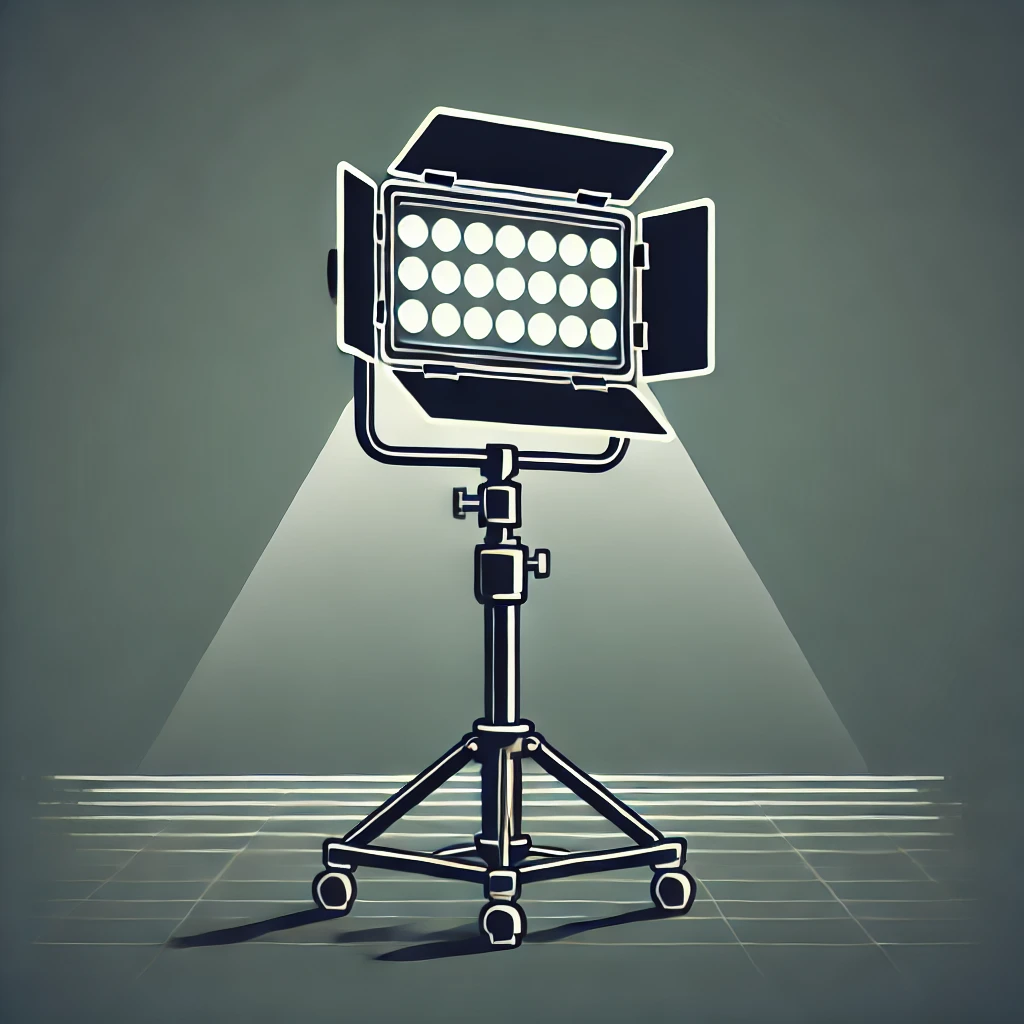As a filmmaker who’s spent countless hours on both Hollywood-style and Nollywood sets, I can tell you that lighting is what separates amateur footage from professional-looking films. Whether you’re shooting a dramatic scene in a Lagos studio or capturing a documentary on the streets of Enugu, understanding the basics of lighting can transform your storytelling capabilities.
The magic of Nigerian cinema, particularly Nollywood, has always fascinated me with its ability to create visuals despite often working with limited resources. This resourcefulness has led to some incredibly creative lighting solutions that have become signature elements of our filmmaking style.
Why Is Lighting Important in Filmmaking?
Think about the last time you watched a film that truly moved you. Chances are, the lighting played a crucial role in creating that emotional impact, even if you didn’t consciously notice it. Lighting isn’t just about making sure your audience can see what’s happening on screen – it’s about painting with light to create mood, direct attention, and enhance your story’s emotional impact.
In Nollywood productions, I’ve seen directors work miracles with basic lighting setups. For instance, during power outages (a common challenge in Nigeria), crews often need to be creative with portable lighting solutions while maintaining professional-quality results. These challenges have led to innovative approaches that have become part of Nollywood’s unique visual identity.
Overview of Basic Lighting for Filmmaking
Before diving into specific lighting types, let’s break down the fundamental elements that make up any lighting setup. When I first started in filmmaking, understanding these basics helped me make informed decisions about which tools to use and when.
The key elements of lighting include:
Intensity is your light’s brightness level, which can dramatically affect the mood of your scene. Strong, harsh lighting can create tension and drama, while soft, diffused light often feels more welcoming and natural.
Color temperature refers to how “warm” or “cool” your light appears. This is measured in Kelvin (K), and understanding it is crucial for achieving natural-looking skin tones and creating specific atmospheric effects.
Direction and positioning determine where shadows fall and how your subject is modeled. This is where the classic three-point lighting setup comes into play:
- The key light is your main light source
- The fill light softens shadows created by the key light
- The backlight separates your subject from the background
Introduction to Tungsten Lights

What Are Tungsten Lights?
Tungsten lights are the traditional workhorses of film lighting. These lights use tungsten-halogen bulbs that produce a warm, consistent light with a color temperature of around 3200K. When I first started in film, these were the standard lights in most studios, and they’re still widely used today.
Benefits of Tungsten Lights
Having worked extensively with tungsten lights, I can attest to their reliability. They provide incredibly consistent color rendering, which means skin tones look natural and colors appear true to life. They’re also relatively affordable, making them a popular choice for both established studios and newcomers to filmmaking.
In many Nollywood productions, tungsten lights remain the go-to choice for studio setups, particularly because they’re readily available and easy to repair locally.
Drawbacks of Tungsten Lights
However, tungsten lights aren’t without their challenges. They generate significant heat – I remember one particularly uncomfortable shoot where we had to rotate crew members more frequently than usual due to the intense heat from our tungsten setup. They also consume considerable power, which can be problematic in locations with unreliable electricity supply.
Common Applications of Tungsten Lights in Filmmaking
Despite their drawbacks, tungsten lights excel in controlled environments. They’re particularly effective for:
- Creating dramatic, film-noir style lighting
- Achieving consistent color temperature in studio settings
- Producing warm, inviting atmospheres for interview setups
In Nollywood, many filmmakers use tungsten lights creatively in combination with local fabrics as diffusers, creating unique lighting effects that have become part of our industry’s signature style.
Introduction to LED Lights

What Are LED Lights?
LED (Light Emitting Diode) lights represent the modern evolution of film lighting. These versatile tools have transformed how we approach lighting setups, offering unprecedented control over both color temperature and intensity.
Benefits of LED Lights
The advantages of LED lights have made them increasingly popular in Nollywood productions. They’re incredibly energy-efficient, which is crucial when working with generators or limited power supply. Their low heat output means actors stay comfortable even during long takes, and their lightweight nature makes them ideal for mobile shoots.
Drawbacks of LED Lights
The main hurdle with LED lights is their initial cost. Quality LED panels can be significantly more expensive than tungsten alternatives. Additionally, some cheaper LED lights can have color accuracy issues, which might require additional post-production work to correct.
Common Applications of LED Lights in Filmmaking
LED lights have become indispensable for:
- Run-and-gun documentary shooting
- Quick setup requirements in various locations
- Achieving specific color effects without gels
- Creating subtle ambient lighting
Tungsten vs. LED Lights: A Detailed Comparison
Having worked extensively with both lighting types, I can break down their key differences:
Color Temperature: Tungsten lights provide that classic warm tone that’s become synonymous with traditional film lighting. LEDs, on the other hand, offer the flexibility to adjust from warm to cool tones instantly, which can be a game-changer for efficiency on set.
Heat Output: This is perhaps the most noticeable difference. While tungsten lights can turn a small studio into a sauna, LEDs remain cool to the touch even after hours of use.
Energy Efficiency: LED lights typically use about 75% less energy than tungsten lights, making them increasingly popular in Nollywood productions where power availability can be uncertain.
Portability: LED panels win hands-down in this category. Their lightweight nature makes them ideal for mobile shoots, while tungsten lights often require more careful handling and setup time.
Factors to Consider When Choosing Between Tungsten and LED Lights
Project Type
Your choice of lighting should align with your project’s specific needs. For studio-based productions with controlled environments, tungsten lights might be perfectly suitable. However, for documentary-style shoots or projects requiring frequent location changes, LED lights often prove more practical.
Budget
While LED lights have a higher upfront cost, their energy efficiency and longevity often make them more cost-effective in the long run. However, if you’re just starting out, quality tungsten lights can provide excellent results at a lower initial investment.
Creative Vision
Sometimes, the choice between tungsten and LED comes down to the specific look you’re trying to achieve. For instance, if you’re shooting a period piece set in the 1970s, tungsten lights might help create that authentic vintage feel.
Environmental Considerations
In Nigeria’s hot climate, the heat output from tungsten lights can be particularly challenging. Additionally, power availability often influences lighting choices – LED’s energy efficiency can be crucial when working with generators or limited power supply.
Basic Lighting Techniques for Tungsten and LED Lights
Setting Up Tungsten Lights
When working with tungsten lights, proper heat management is crucial. Always ensure adequate ventilation and keep lights at a safe distance from any flammable materials. Using scrims and diffusers can help soften the light while reducing heat output.
Setting Up LED Lights
LED lights offer more flexibility in setup. You can often position them closer to subjects due to their low heat output, and their adjustable color temperature means you spend less time setting up gels and diffusers.
Combining Tungsten and LED Lights
Don’t be afraid to mix lighting types – some of the most interesting effects come from combining traditional and modern lighting tools. Just remember to match color temperatures carefully to maintain consistent look.
Basic Lighting in Nollywood: A Case Study
Nollywood’s approach to lighting has evolved significantly over the years. Many productions now use a hybrid approach, combining traditional tungsten lights for main studio setups with LED panels for location shoots and fill lighting.
For example, in recent Nollywood productions, I’ve observed creative uses of LED panels to simulate natural daylight through windows, while tungsten lights provide the main interior lighting. This combination creates a rich, layered lighting setup that enhances the production value while working within budget constraints.
The Future of Lighting in Filmmaking
The lighting landscape continues to evolve rapidly. Smart lighting systems with DMX control are becoming more accessible, allowing for precise adjustments and preset programming. In Nollywood, we’re seeing increased adoption of LED technology, particularly as prices become more competitive.
The future likely holds even more exciting developments. Artificial intelligence might soon play a role in automated lighting adjustments, and sustainable lighting solutions will become increasingly important as the industry focuses more on environmental impact.
Conclusion
Whether you choose tungsten lights, LED lights, or a combination of both, understanding their characteristics and appropriate applications is crucial for successful filmmaking. In Nollywood, we’ve learned to be particularly adaptable, often creating stunning visuals by making the most of whatever lighting tools are available.
Remember, great lighting isn’t about having the most expensive equipment – it’s about understanding your tools and using them creatively to enhance your storytelling. As you develop your lighting skills, don’t be afraid to experiment and find your own style. After all, some of the most innovative lighting techniques in Nollywood came from working creatively within limitations.
The key is to start with the basics, understand your available tools, and gradually build your expertise. Whether you’re working with traditional tungsten lights or modern LED panels, each project is an opportunity to refine your lighting techniques and develop your unique visual voice in filmmaking.
FAQ:
Q. Are LED lights better than tungsten lights for filmmaking?
It depends on the project. LED lights are more energy-efficient, produce less heat, and offer adjustable color temperatures. However, tungsten lights provide a natural warmth that some filmmakers prefer for their cinematic look.
Q. Can I mix tungsten and LED lights on set?
Yes, but you need to balance their color temperatures to avoid mismatched lighting. Using gels or color correction tools can help blend the two seamlessly.
Q. Are LED lights expensive for beginner filmmakers?
While high-end LED panels can be costly, there are many affordable options available for beginner filmmakers. Budget-friendly LED lights offer decent color accuracy and brightness control.
Q. How do I choose the right lighting setup for my Nollywood project?
Consider factors like the scene’s mood, budget, power availability, and whether you need adjustable color temperatures. If you’re shooting indoors with controlled lighting, tungsten might work well. If you need flexibility and portability, LED is a great choice.
Q. What accessories should I get for tungsten or LED lights?
For tungsten lights, consider barn doors, diffusion gels, and dimmers. For LED lights, softboxes, reflectors, and color filters can help achieve the desired effect.















Leave a comment